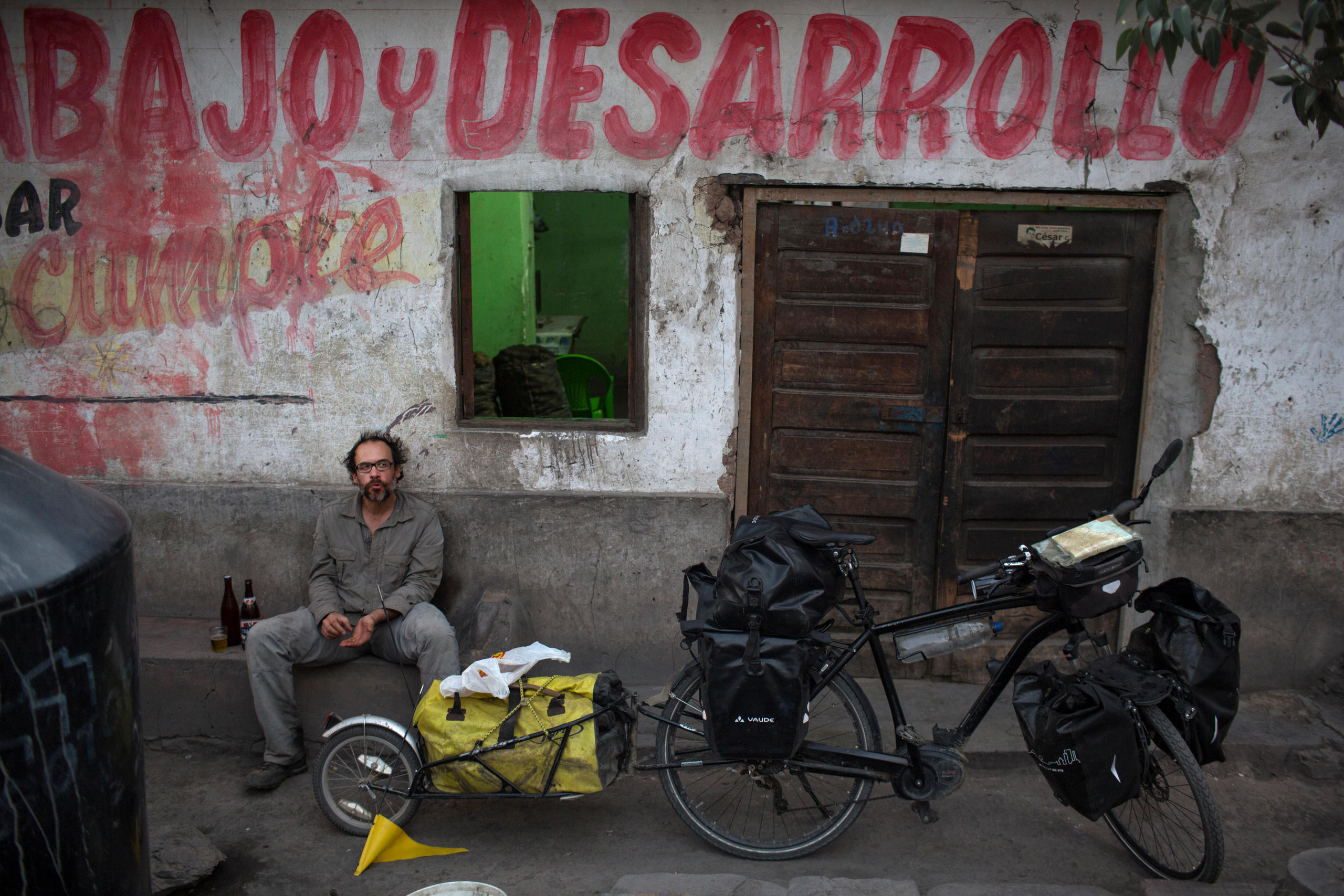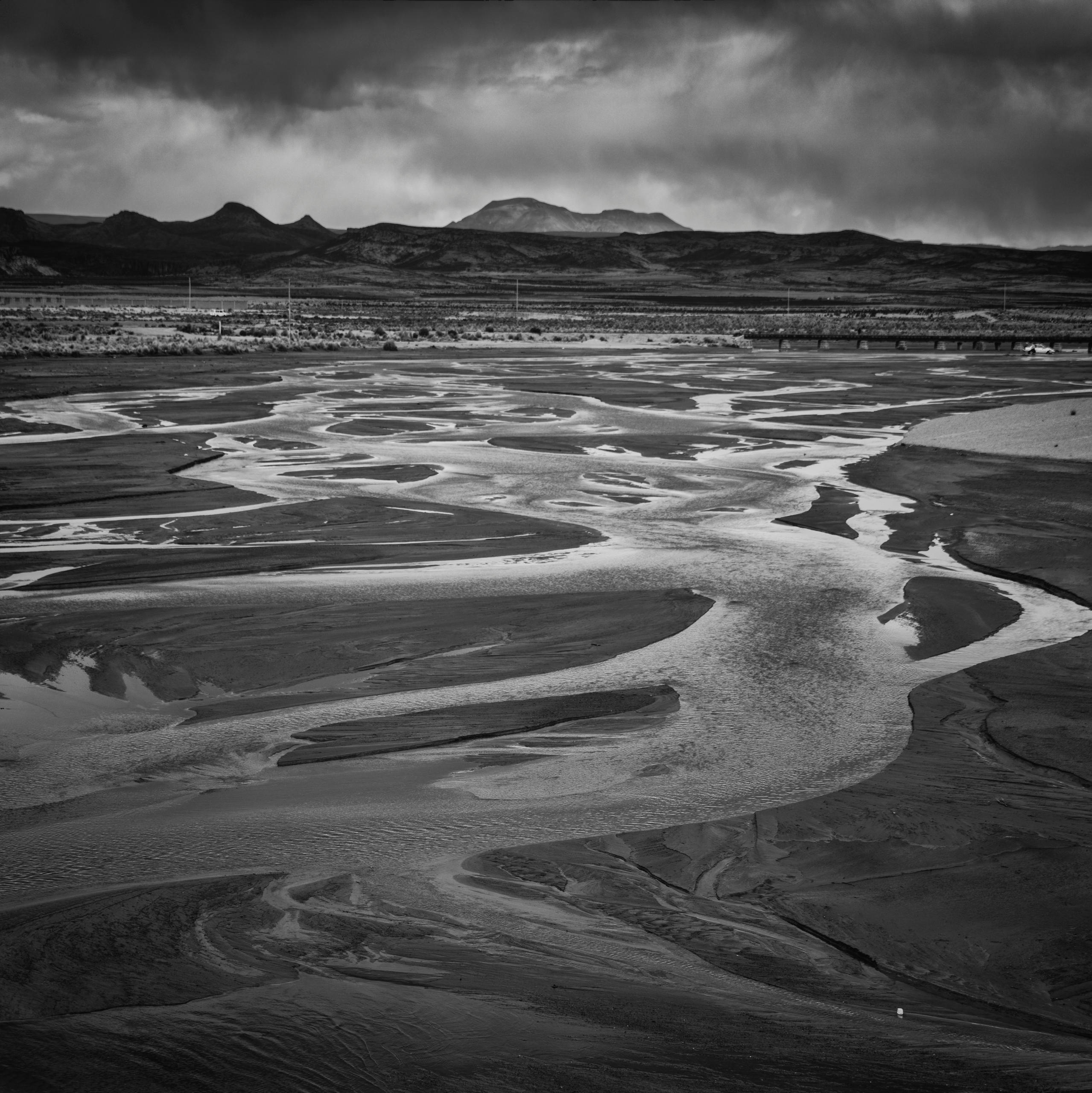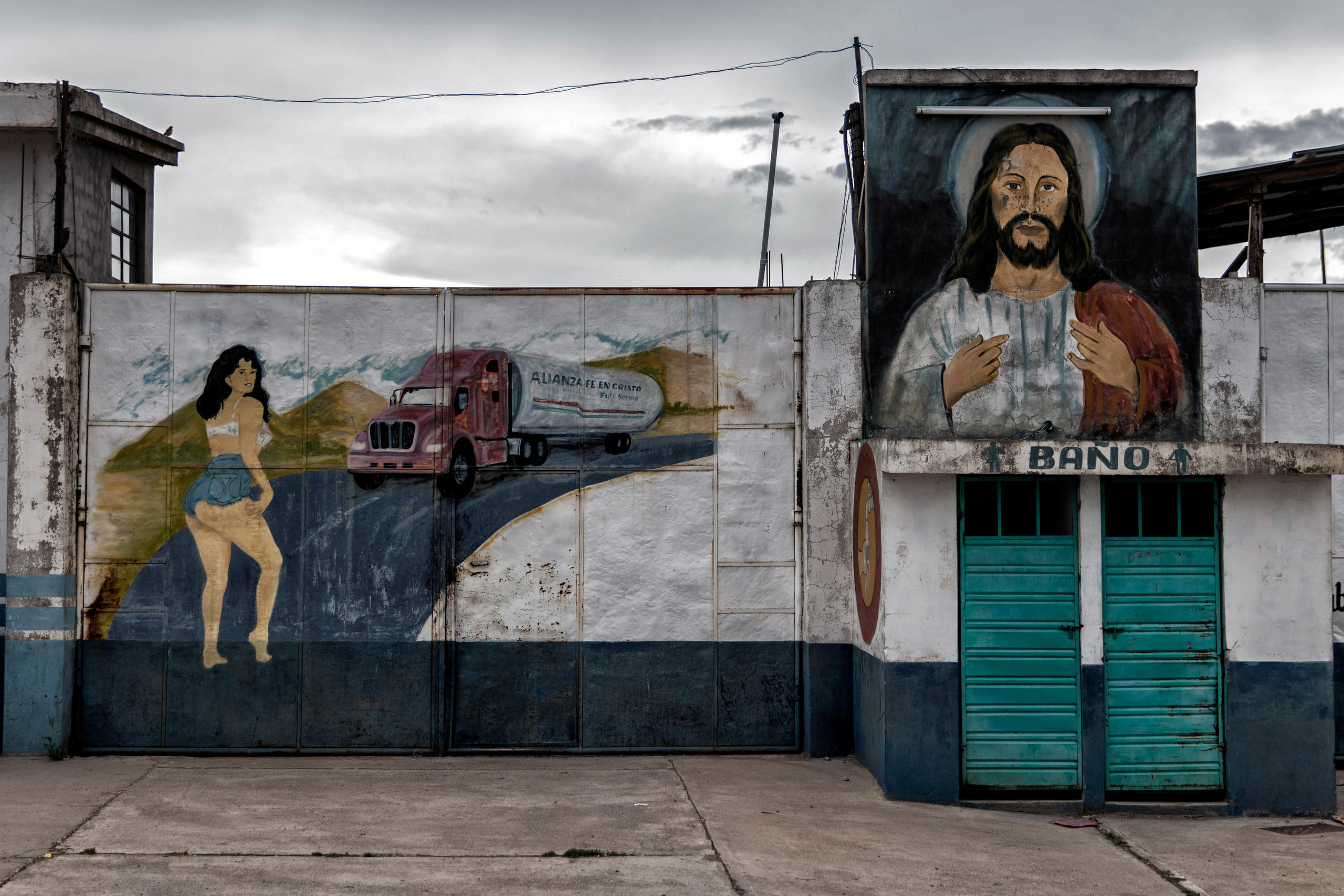
Swiss photographer completes ‘E-bike diaries’ voyage

What kind of Latin America road trip would Che Guevara go on if he were alive today? He may have ridden an electric bike. That’s what Swiss photographer Luca Zanetti and friends have done with their just completed ‘E-bike diaries’ adventure.
The Swiss photographer swears he will never go on another adventure External linkquite like it. The images External linkare etched in his memory: smiling villagers, curious to see him riding by, the plains and the stunning mountains and roads that wind up and down the longest mountain range on the planet, as well as the smell of the rain-soaked soil and the sea breezes.
“I was seen as a hero,” said Zanetti, describing the welcome he received in towns and villages in the Andes, at 5,000 metres above sea level, after daily rides of up to 140 kilometres.
But whenever the more curious villagers asked about his companion, their admiration quickly vanished on hearing the answer.
“It’s an electric bicycle,” he used to reply.

‘Ah! Like a motorbike!’ locals declared. They generally seemed disappointed, not with the e-bike but with the cyclist’s powers. They imagined he was obviously pretending when he pedalled up the steep hills.
E-bikes are a rare sight in the southern-most parts of South America – Argentina, Chile and Uruguay. It is certainly not like in China, a country with 200 million e-bikes, or Switzerland, where one in six bicycles is electric.
But that was what Zanetti’s challenging road trip was all about: taking this unknown object to remote parts of South America and showing how in practice an e-bike can offer an environmentally friendly solution to some of the continent’s huge traffic problems.
As well as his e-bike, Zanetti, 45, had another inseparable companion – his camera. His mother first introduced him to the magic of photography when he was 14 years old on a trip to Nicaragua in 1985 during the Sandinista Revolution. Since then, he has constantly travelled the world with it.
“I have always been fascinated by being on the road,” he explained.
Zanetti decided to call this latest voyage ‘The E-bike Diaries’External link, in reference to “The Motorcycle Diaries’, the memoirs by Ernesto ‘Che’ Guevara – and recent film – detailing his journey through South America in 1952 on his Norton motorcycle, known as ‘Poderosa’. The formative trip left deep impressions on the Argentine revolutionary.
For his expedition, Zanetti also wanted to ‘break new ground’ like Che and, in terms of mobility, to try and end certain inequalities.
The Swiss photographer’s 11,150km odyssey via Chile, Argentina, Bolivia, Peru, Ecuador and Colombia was picked up by numerous newspapers, magazines and television stations.
Saved by a solar panel
In countries like Colombia, for example, the search for fossil fuels and massive use of water in mining operations have hampered efforts to preserve natural resources and prevented progress towards the development of renewables.
But in inhospitable parts of Latin America, where local residents rarely benefit from mining operations, miracles can occur.
In Argentina’s Patagonia region, near the Pino Hachado border crossing with Chile, located at 1,863m, the main economic activity is digging for fossil fuels. Argentina also gets half of its hydropower from this remote area. For many years electric power lines were unheard of.
On his journey, Zanetti was fortunate to stumble upon a farm equipped with solar panels.
“The farmer let us charge our e-bike batteries, as we were about to totally run out of power. I was a bit too greedy and plugged in all my batteries at the same time. Suddenly there was a bang; the power went out, the lights, the fridge, and so on, and then the lights started flashing.”

More
Death of a lake
One by one Zanetti was able to slowly charge the eight lithium-ion batteries.
“We were saved! But I only saw solar cells in Argentina. In remote areas solar energy is stored in truck batteries.”
The lake is deserted
Elsewhere, the Swiss photographer counted only a small number of windfarms during his journey.
His stopover in Oruro in Bolivia sticks in his mind, both in terms of the environmental damage he witnessed and its impact on local residents.
“One of the most difficult times during the visit was seeing dried-up Lake Poopó and photographing some of the orphans living among the 736 fishing families who no longer have any means of subsistence because of the greed of the mining industry, climate change and water control policies,” he said.
Chewing coca leaves
Braving the cold and beating sun on his winding journey through Bolivia and Peru, Zanetti constantly chewed coca leaves like a local “to forget my hunger and thirst.”
The main question he was asked was: “How much does the bike cost?” To avoid getting into problems and giving figures, he told them the e-bike was a prototype.
“I think it would’ve been strange for an Andean farmer to hear that it cost $5,000, the amount he earns during his lifetime,” said the photographer.

Peru was definitely the toughest part of the expedition.
“Truck drivers don’t really know what it’s like overtaking a cyclist when they are carrying several tons of goods and causing the ground to shake and intense airflows,” he explained. Some drivers tried to destabilize him to get him to move out of the way.
But in this world of huge tyres, exhaust fumes and pollution, Zanetti also discovered beauty.
“There is a new culture, that of quality: murals painted on public roads and at gas stations, with religion mixed with half-naked female bodies. This became one of the themes of my photography,” he explained.

More
The splendor of the Andes and its people
Zanetti struggles to hide his passion for Latin America.
“There are incredible views all the time that make you believe it’s possible to start a new life, to do something differently! I had this feeling all the time during the trip. But I was also quite disappointed with the level of environmental awareness and changes in energy policy in Latin America,” he said.
But there is good news from one of the capitals of the region. “Quito [in Ecuador] have bought 300 electric bikes and made them available to the general public,” he recounted back in Zurich. He also has 8,600 photographic memories of his Latin America odyssey.
His adventure on his electric ‘Poderosa’ is now over. Back in Switzerland, the photographer returned to his normal life and quietly got back on his normal bicycle. But his reintroduction to organised Swiss society didn’t go that smoothly. On his first morning back on an empty Zurich street, he was fined for running a stop sign.
Contact author on Twitter: @PatiIslasExternal link
Have you considered buying an e-bike?
You can also tell us your story in the comment section below.
(Translated from Spanish by Simon Bradley)

In compliance with the JTI standards
More: SWI swissinfo.ch certified by the Journalism Trust Initiative































You can find an overview of ongoing debates with our journalists here . Please join us!
If you want to start a conversation about a topic raised in this article or want to report factual errors, email us at english@swissinfo.ch.